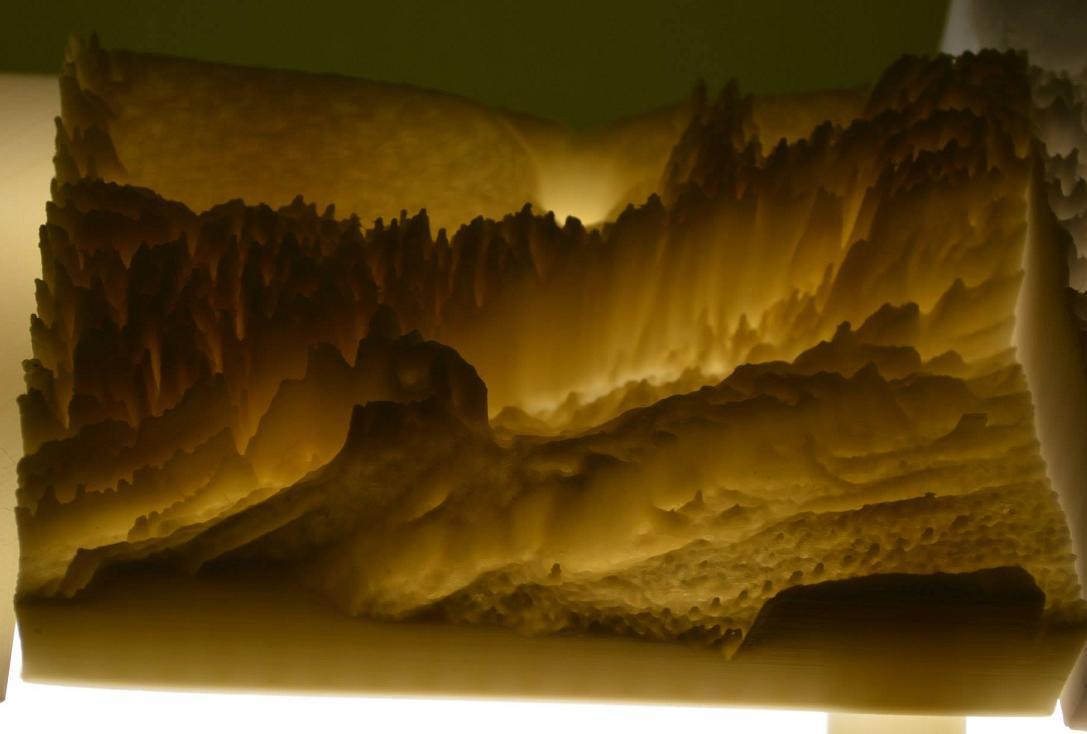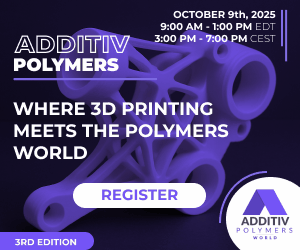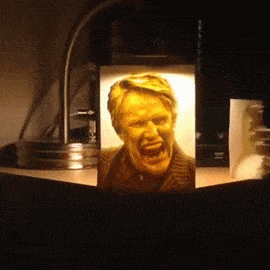 Over the past year or so, we have really begun to see artists take 3D printing and use it to turn 2-dimensional photographs and paintings into beautiful 3D printed lithophanes. Back in January, we reported on an online tool called the Image to Lithophane Generator. It allows virtually anyone to turn a photograph into a 3D printable lithophane. All that they need to do is upload a photo, choose a few options, and then download the STL file to print.
Over the past year or so, we have really begun to see artists take 3D printing and use it to turn 2-dimensional photographs and paintings into beautiful 3D printed lithophanes. Back in January, we reported on an online tool called the Image to Lithophane Generator. It allows virtually anyone to turn a photograph into a 3D printable lithophane. All that they need to do is upload a photo, choose a few options, and then download the STL file to print.
While these lithophanes are quite phenomenal in their own right, what one man named Ben Malouf has done takes this one step further to create super thick, super deep lithophanes unlike anything we have seen before.
I had the pleasure of meeting Ben Malouf, the Creative Manager for Aleph Object, Inc., the company behind LulzBot 3D printers, last week. He was on hand at 3D Print Week NY, helping run the LulzBot booths which were set up in both the 3D Print Design Show and the Inside 3D Printing Expo.
 Also on hand were some of his unique 3D printed lithophanes. These designs build on the idea of the traditional art of creating lithophanes, but take it several steps further to create optical illusion-like pictures.
Also on hand were some of his unique 3D printed lithophanes. These designs build on the idea of the traditional art of creating lithophanes, but take it several steps further to create optical illusion-like pictures.
“I had been messing around with printing Glow-in-the-Dark PLA lithophanes, making the light areas of an image thicker so that they would glow more brightly,” Malouf told 3DPrint.com. “I decided to see what the model would look like if I made it ten times thicker than usual — 40mm instead of 4mm. It didn’t look easily printable. The model actually looked like some kind of mythical miniature mountain range. I tried printing it anyway and was really happy with the results.”
Malouf tells us that he is a huge fan of trying to push artistic processes to their breaking points. This is what drove him to try and stretch his lithophanes much deeper than usual. At first it was merely an experiment, one which would test how deep he could actually make his creations, but when he decided to back light his lithophane of President Barack Obama, he was blown away by the level of detail and tonal range. As you can see in the video provided below, the image appears to melt and transform as the viewer’s perspective changes.
So far, Malouf has 3D printed 15 of these incredible glow-in-the-dark lithophanes, many of which were on display in New York.
“I started with photos of recognizable celebrity faces, moved on to recreating classic paintings like ‘The Starry Night’, and for the show in New York I focused on LulzBot printers and imagery, Colorado scenery, and one awesome shot of Free Software pioneer Richard Stallman,” Malouf told us.
While these pieces are incredible to look at, and appear as though they would take a lot of time to create, Malouf tells us otherwise. All that is required is an image file, Cura, and a 3D printer such as the LulzBot TAZ 5, which is capable of printing the geometry. He notes that the higher the quality of the image, the better the results will be.
“I bring images into GIMP to bump up the contrast and remove color,” explained Malouf. “Cura uses lightness to determine thickness, so if your image is too dark, you will end up with a pretty thick slab of plastic before the features start to print. I also make the background white on many of the portraits to reduce the amount of plastic used and the print time. Then you simply open the image file in Cura, and a dialogue pops up asking for desired dimensions. I settled on 40mm as a good thickness for letting enough light pass through, but still providing a lot of tonal range and depth for sculptural interest.”
After the dimensions are confirmed, Cura automatically creates the geometry, which can be directly sent to a 3D printer to begin printing. Malouf then recommends using a strong back light to fully bring out the image. At 3D Print Week NY, he mounted his lithophanes onto an LED shop light with 3D printed brackets that he modeled specifically for the display–a display that was nothing less than amazing.
Malouf printed all of his lithophanes on either a LulzBot TAZ 5 or LulzBot Mini 3D printer, using natural ABS because it diffuses light so well, and provides a yellow tint to it.
“I definitely had a lot of people asking how I made them,” Malouf explained. “When I told them the models were created in Cura, a lot of people were very surprised. I don’t think most people know that you can generate lithophanes so easily, and with totally free software.”
What do you think about these incredible lithophanes? Will you be creating any of these yourself? Discuss in the 3D printed lithophane forum thread on 3DPB.com. Check out the video and some additional photos below.
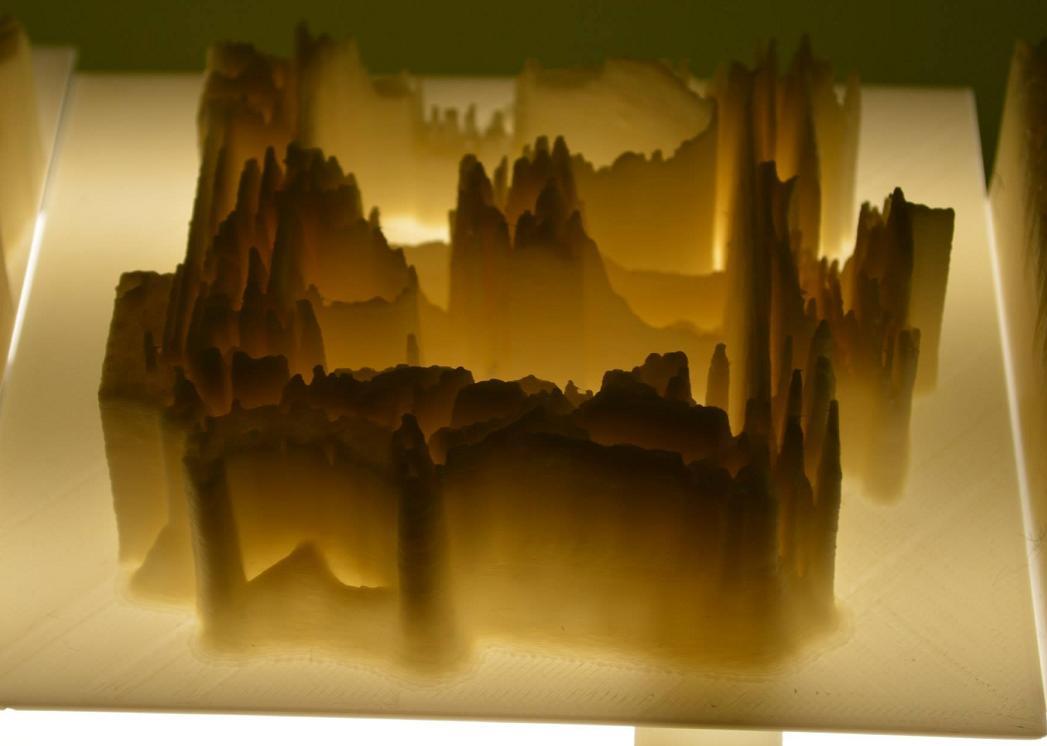
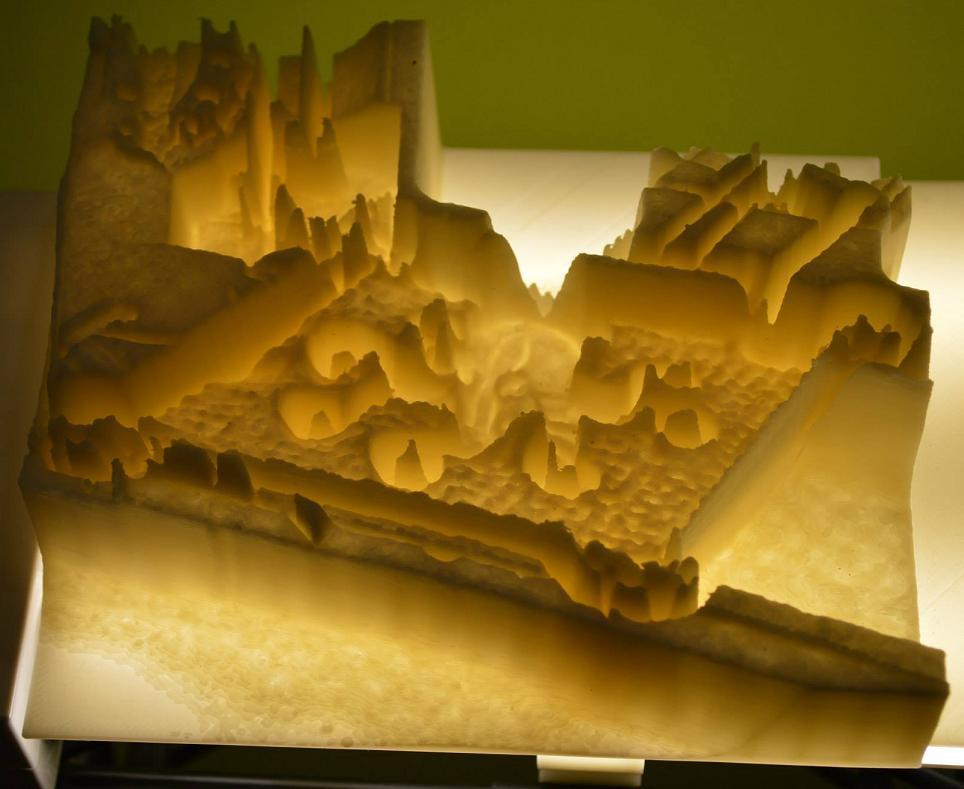
Subscribe to Our Email Newsletter
Stay up-to-date on all the latest news from the 3D printing industry and receive information and offers from third party vendors.
Print Services
Upload your 3D Models and get them printed quickly and efficiently.
You May Also Like
3D Printing News Briefs, September 24, 2025: Survey, AM Curriculum, UHPC Rheology, & More
In today’s 3D Printing News Briefs, we’ll get things started with a comprehensive post-processing survey by PostProcess Technologies. Jacksonville State University is partnering with EOS Additive Minds to develop AM...
3D Printing News Briefs, September 11, 2025: Project Call, Auto Color Mapping, & More
We’re starting with America Makes news in today’s 3D Printing News Briefs, as a new project call for continuous fiber AM was recently announced. Moving on, there are two stories...
Phase3D Brings Its Fringe Inspection Hardware to Colibrium M2 Series 5 3D Printers
Amidst the gradual scale-up of the additive manufacturing (AM) industry, a consensus has started, solidified around the idea that the industry urgently needs to bring down the cost of qualifying...
From Energy to Defense: Strengthening Supply Chains Through Dual-Use Additive Manufacturing
Dual-use technologies serve more than one sector, often bridging the gap between commercial and defense applications. Additive manufacturing (AM), once seen primarily as a prototyping tool, is now maturing into...




